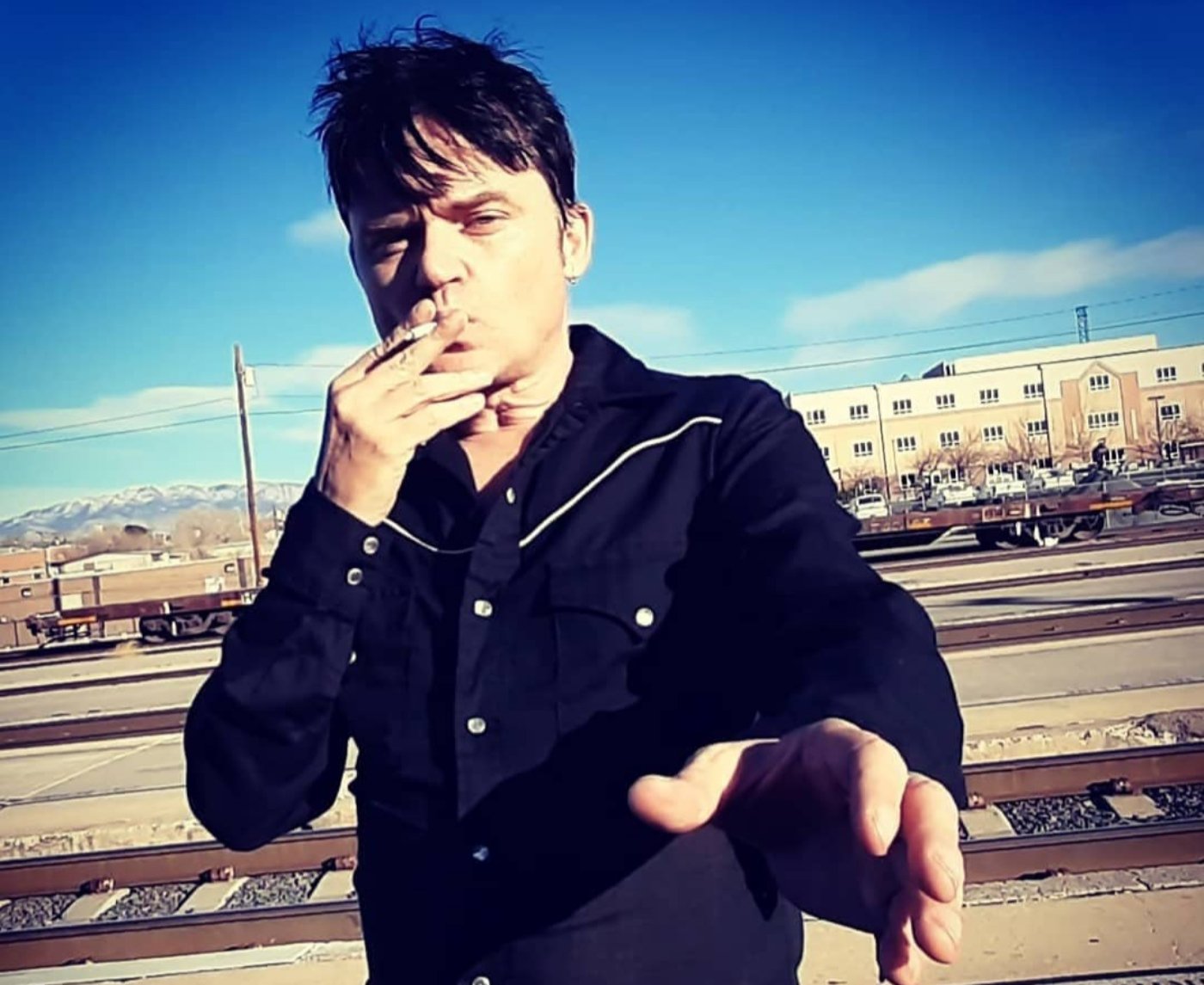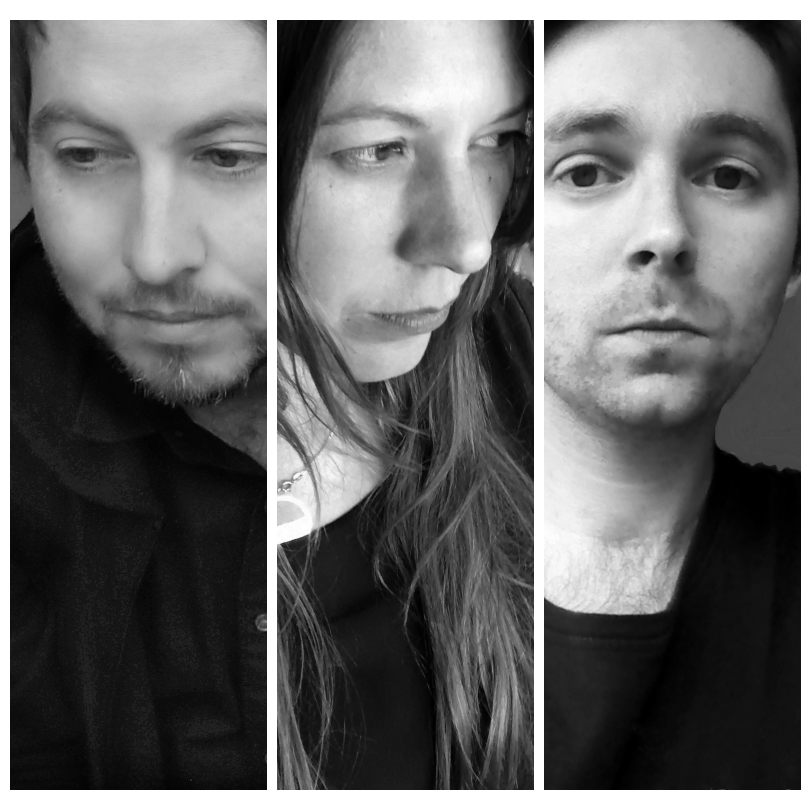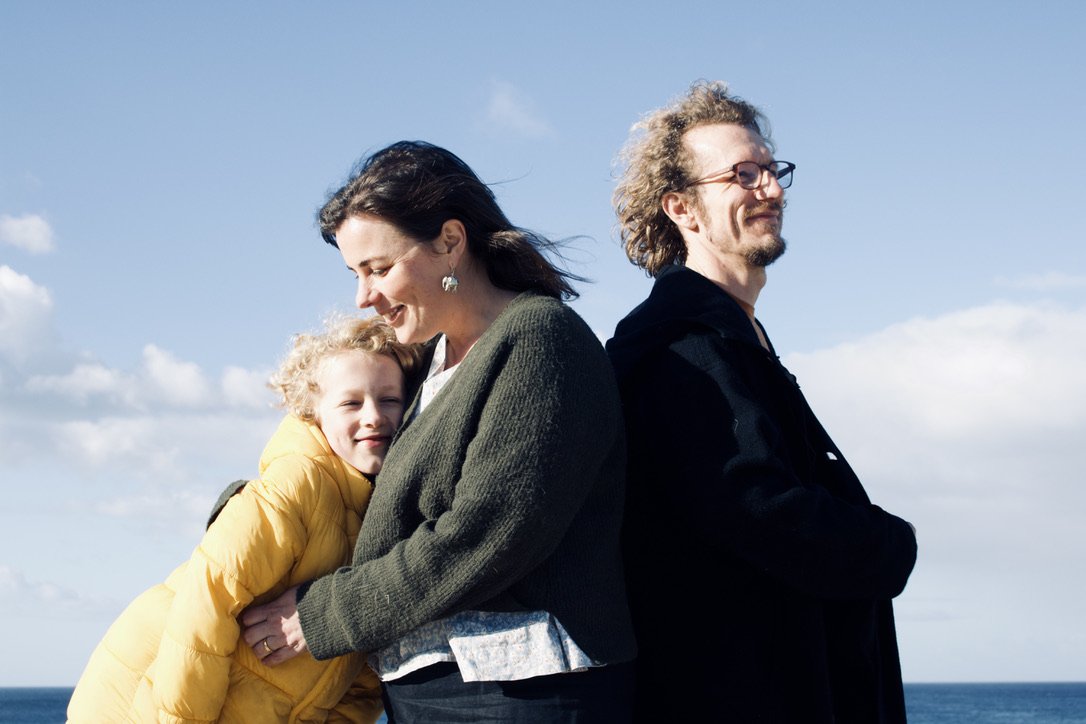Diamond Field: Interview + Vinyl Release of ‘Diamond Field’ Album
KATIE BROWN - 8 MAR 2022
PHOTO: CLAIRE PRICE
Positively sparkling with a ‘21st century 80s music’ gleam, Diamond Field’s debut self-titled album is a special one. The project of New York-based New Zealander Andy Diamond (aka Andrew B. White), Diamond Field is an uplifting and catchy collection of songs infused with messages of hope and positivity, and it’s finally now available as an LP record after its initial digital release in July 2021 - a worthy addition to any vinyl aficionado’s collection.
As multi-faceted as its name suggests, Diamond Field consists of ten tracks, each featuring a different collaborator. There’s a strong New Zealand connection throughout, with the likes of Wellington artist/producer Nik Brinkman (Junica, Over The Atlantic, Physical) making an appearance along with Auckland’s Belinda Bradley (Selon Recliner), Pennsylvania-based Miriam Clancy, LA-based multi-instrumentalist Rodger Cunningham, and vocalist Matthew J. Ruys (Fuemana, Houseparty, Strawpeople), currently living in Melbourne. In complement to these artists, White pulled in a number of other contributors in the form of synth and soundtrack artist Cody Carpenter, Chicago’s Kyle Brauch and NYC-based Chris Ward (The Saxophone Warrior), with Minneapolis artist Nina Luna, Chelsea Nenni and Scottish act Becca Starr rounding out the collaborative roster.
Successfully pulling off a collaborative album is no mean feat, especially when involving such a large number of contributors. Each artist has their own unique sound and musical characteristics, and technically speaking, such an array of styles might generally lend itself more to work in the soundtrack or compilation sphere, where each song has a little more stylistic elbow room. But in the Diamond Field project, White acts as the unifying thread with his unique brand of 80s-style synth-pop, and the way this is woven throughout each track is really very masterful. Each song has an individuality and colour that reflects the collaborating artist in a way that feels natural and unforced, yet through his consistent and considered production White still manages to translate this musical amalgam into an album that is very tight and cohesive.
White, influenced by the likes of 80s producers Hugh Padgham (Phil Collins, The Police), Stephen Hague (Pet Shop Boys, New Order) and Peter Wolf (Wang Chung, Survivor), adopts a similar production approach to them, opting to meld modern electronica and technology with electric guitars, bass and real drums. It’s an approach that’s as tasty as it is tasteful, where references result in a coupling of nostalgia with refreshing modernity. From the saxophone-filled and Depeche Mode-reminiscent ‘Look to the Stars’ featuring Kyle Brauch and The Saxophone Warrior, to the likes of ‘A Kiss Apart’ with Belinda Bradley and the Becca Starr-featuring ‘It’s Your Time’, it’s a collection that showcases the individuality of each artist while adding in a dynamic high-voltage potency via White’s 80s synth-pop sensibility.
Bright, positive and upbeat, Diamond Field is a colourful and danceable album that is sure to lift the spirits, and we couldn’t recommend it more.
Read our interview with Andrew White of Diamond Field below, and pick up the Diamond Field LP via Flying Out Records here.
Find Diamond Field on Instagram | Spotify | Apple Music | YouTube | Bandcamp | Website
KATIE: DIAMOND FIELD IS A STUNNING DEBUT ALBUM - CONGRATULATIONS! IT’S CERTAINLY ONE THAT LENDS ITSELF TO VINYL, SO HOW DOES IT FEEL TO HAVE THE VINYL RELEASE FINALLY HAPPENING?
ANDREW: Thanks so much! Oh yeah it’s great to have the vinyl version out! Like every other artist I had to wait in the long, lonely line that is “vinyl manufacturing” these days. I had to make some adjustments to a couple of songs with my mastering engineer and in the short time it took to do that, the vinyl production time had increased another four weeks. It’s crazy. Pressing vinyl is not for the faint hearted or impatient! That said, I had a lot of support from lovely people who were happy to pre-order the vinyl and wait it out, and I think it’s accepted that’s how vinyl works these days. If you do want your new album out on vinyl on the same day as your streaming, you really are looking at delaying your release for at least nine months. Otherwise things need to be staggered if you can’t wait that long – release the digital version, then the physical versions later. I did CD and cassette too but I guess having vinyl somehow ‘legitimizes’ you as an artist, and even allows for another push to those who might not have heard it on its digital release.
HOW HAS THE RECEPTION OF THE ALBUM BEEN SINCE ITS INITIAL RELEASE IN 2021?
Really good! I’ve got some great reviews and nice comments from listeners. The fact that there are different vocalists on each song means that everyone seems to have a different favorite track. I don’t seem to get the impression there’s the one track that everyone likes and the rest is just filler! The most rewarding feedback is from people who don’t have a stake in the genre or get caught up in the ‘80s nostalgia aspect – they just like the music for what it is. And young people too! They really love it. Maybe their parents used to listen to stuff like this when they were kids so they have some subliminal affinity for the music going on! Who knows – I’m just glad they dig it!
THE ALBUM FEATURES A NUMBER OF DIFFERENT ARTISTS AS GUESTS THROUGHOUT. HOW DID THIS COME ABOUT? HAD YOU ALWAYS INTENDED TO MAKE A COLLABORATIVE ALBUM?
Diamond Field was always intended as a collaborative project. I like working with other people on music and I have some very talented friends that I could call on! Besides that, I’m not much of singer so I couldn’t do justice to the vocals! I look at Diamond Field in a similar way to acts like the Chemical Brothers or Massive Attack, where they would do the music and have different vocalists to come in and sing. It adds more variety and interest and also take away from it being “all about me”, not to mention some perspective and constructive feedback from my collaborators! Working with others is also a great way to cross-pollinate and find new audiences. If you like one of the featured artists on the record you might go and check out their work, and vice versa.
PHOTO: CLAIRE PRICE
WHAT WAS YOUR PROCESS WHEN WORKING WITH THESE DIFFERENT ARTISTS BASED ALL OVER THE WORLD?
I’ve been working remotely with people for a long time now so that part of it is pretty straight forward, sending files back and forth. Singers are really savvy with recording and supplying their own vocals these days. So we had files coming from Nik Brinkman and Belinda Bradley in New Zealand, Becca Starr in Scotland, Cody Carpenter who was in Japan at the time, and then Kyle Brauch, Nina Luna here in the US. Actually quite a few of the NZ artists are based the US — Miriam Clancy, Matthew Ruys (now in Melbourne) and guitarist Rodger Cunningham made a nice little kiwi club. On a couple of occasions I did some vocal sessions here in Brooklyn with the singers. Matt came out from LA where he was living at the time, and over a weekend and we recorded a bunch of his vocals in my closet! Sometime having that in-person experience generates ideas on the fly that can’t easily be replicated remotely. Chelsea Nenni was living in NYC at the time and she came over one morning and laid her vocals down. She’s a pro. I played bass in her band Late Slip so we had a good musical relationship going, and that applies to many of the artists on the album – we’d worked together before or played in bands which made things easy! The sax player Chris Ward was my neighbor and I used to feed his cats while he was on tour. It’s all about community!
HOW DID YOU GO ABOUT KEEPING THE FEEL OF THE ALBUM TIGHT AND COHESIVE? DID YOU WRITE EACH SONG FIRST AND THEN MATCH-MAKE THEM TO AN ARTIST, OR DID YOU WRITE WITH A PARTICULAR ARTIST IN MIND?
Generally I write the music first and then figure out who might suit singing it. If I’m in the position of writing a song for a particular artist, say for a commission, then I would be more mindful of their vocal style and range. But writing the music first gives me more freedom and I can think about whose voice might work on that song later. There are a few songs on the album where I wrote the music and the lyrics, singing the vocals on the demo myself if I had a very specific idea. Then I would get the singer to fix up my mess and do it better! Other vocalists would write their own lyrics and vocal melodies and offer suggestions for the arrangements. There wasn’t one clear way of doing it. Although the album covers a few different (but related) musical styles and has various singers, the overall feel is pretty consistent. After all, I can’t really help sounding the way Diamond Field does and that kinda works out! I like to tell people the record is like a compilation album but all from coming from the same artist…
WHAT WAS THE MOST REWARDING PART OF THE EXPERIENCE?
Definitely that feeling of having all the tracks mixed and mastered and sending them out for release. But the whole process is rewarding – writing what becomes a chorus, getting vocals sent from a vocalist and hearing them for the first time, mixing a track and hearing it come together; finishing the artwork. So many parts of the process are excuses to celebrate with a glass of something good!
DIAMOND FIELD LP
YOU TALK ABOUT INTENTIONALLY WRITING THE SONGS TO HAVE ‘EAR WORM’ APPEAL IN THEIR STRUCTURE - HOW DO YOU GO ABOUT THIS?
That comes from my love of pop music, listening to and dissecting it. Finding out what it is about certain music that causes us to come back for repeat listening and why it gets stuck in our brains. For me that usually comes down to song structure – forming a song so it builds up to a point and takes you with it. You know that the verse has a particular thing going on here, and the bridge does something cool there later. You want to jump on board for that aural ride! Production choices are the icing on the cake and I take that very seriously. If I add a synth sound or hi-hat in a certain place its for a particular reason – to heighten the listening experience. That’s the ear candy. One of my favorite examples of this is ABBA. They way they put together their songs and the little things they did to make them shine is music production 101.
DO YOU INTENTIONALLY GIVE YOURSELF PARTICULAR PARAMETERS WHEN YOU ARE WRITING AND PRODUCING?
I also make other kinds of music and play with different bands and artists so yes, I have parameters that need to be musically compatible for what the genre is. That’s not to say there’s no room for experimentation but if I’m playing Americana rock, then the drum machines and synths are less likely to feature! For Diamond Field specifically, it’s more of a feel and a vibe that is injected into the music. It can’t be cynical, negative or not feel good. It’s fun and it’s positive and I keep to that angle, then it’s Diamond Field.
WHAT’S YOUR OWN MUSICAL BACKGROUND - WHAT HAS CONTRIBUTED TO SHAPE THE FEEL OF YOUR MUSIC?
I learnt piano as a kid but gave it up. I had a nun for a teacher who used to smack her cane across the keys if you messed up! Later on I picked up the bass which became my main instrument and I was lucky enough to have the late Phil Fuemana mentor me as a musician. I played in a bunch of bands and never stopped. Eventually I started writing and producing more, in addition to the playing. Bass players seem to do that for some reason! I also worked on the other side of the music industry doing lots of album covers and music related graphics and was fortunate to get to see how the business side of things worked. The valuable insights I got along the way I’ve put into my own record label, into promotion and all of the unglamorous parts of being an artist in the 2020s! ‘80s music has always influenced me and I found an outlet with Diamond Field to indulge myself in it!
PHOTO: CLAIRE PRICE
WHAT LED TO THE RELOCATION TO NEW YORK, AND WHAT’S IT BEEN LIKE BEING INVOLVED IN THE MUSIC SCENE THERE AS OPPOSED TO NEW ZEALAND?
In 2012 my wife had an opportunity to come work in the US so we decided to make the most of it and come over. I was also at a point where I was wanting to focus more on creating music rather than being behind the scenes and relocating was an incentive for that. I’ve had a lot of opportunities here to connect and play music with a bunch of bands and artists in all kinds of genres. Through that experience I feel like I’m playing better than ever, learning from some great musicians and really enjoying the enthusiasm of the artists I play with. There are so many artists and bands coming and going here and there’s always something happening and venues to play at. Via weird twists of fate I’ve ended up playing shows with Meatloaf’s sax player, Springsteen’s keyboardist and Patti Smith’s guitarist! I’ve also connected with NZ musicians who live here or are passing through and that is a really nice thing to do. The thing I really love is having people ask me what I do and I tell them I write and play music and they take me seriously!
WHAT’S NEXT?
The album release has taken up a lot of time so it feels like I’ve been totally focused on that for a while now. Things don’t stop once your album is out – you have to keep promoting it or it will quickly disappear into the void with all the other gazillion releases! I have been producing and recording some other artists, rehearsing with other bands, doing some remixes and writing new Diamond Field material. Most importantly I’m putting together a live version of Diamond Field! I didn’t make it easy on myself using different singers because it is impossible to get them all together in one place for a show! My solution was to get one singer to cover all the songs in the set. Jenny Bates comes from the Broadway scene and has been a real trooper in nailing the different songs and vocal styles. We’re starting out small as a duo and will hopefully expand into a bigger live band as things get going. Either way it’ll be fun! I hope to announce the first live show very soon but I have to remember how to play my own songs first!






![[Friday Feature] Valere: Interview & Review of Single/Video ‘Lily’s March’](https://images.squarespace-cdn.com/content/v1/60df978127837427ee475bb1/1712873492906-GFSK6SW4FJ2Z2STOJVAM/Valere+-+Photo+Credit+Hayden+Graham+%281%29.jpg)

![[Video Premiere] Sig Wilder & Friends: Video for ‘Texasman’ + Interview](https://images.squarespace-cdn.com/content/v1/60df978127837427ee475bb1/1699397388451-3GDFG0FOA5T5WPA33ANE/IMG_2393.JPG)


![[International] Jackson VanHorn Releases New EP ‘Liminal Music, Vol. 1’](https://images.squarespace-cdn.com/content/v1/60df978127837427ee475bb1/1695708847770-UF5H8G2X7N9Q9KF22TA5/Jackson+VanHorn+Liminal+Music+Vol+1.jpeg)

![[Friday Feature] Jazmine Mary: Interview + New Album ‘Dog’](https://images.squarespace-cdn.com/content/v1/60df978127837427ee475bb1/1686280012940-2OBAFHQ9HIJFIVNYE3CZ/JazmineMary_Album+image+no+text+-+Credit+-+Jim+Tannock.jpg)
![[Video Premiere] Emily Rice Releases New Single/Video ‘Warenoa’](https://images.squarespace-cdn.com/content/v1/60df978127837427ee475bb1/1685044212209-9X8UTD0I22FY3LAGKDHI/Press+Shot_+Photo+Credit%2C+Charles+Looker.jpg)


![[Australia] Benny Time: Interview + New Album ‘Benny and Friends’](https://images.squarespace-cdn.com/content/v1/60df978127837427ee475bb1/1653689671831-U73A00Y16B4PYUPIEY7X/Benny+Time+3596.jpg)











![[International] Alison Clancy: Poised for Greatness](https://images.squarespace-cdn.com/content/v1/60df978127837427ee475bb1/1645751104499-HT5MCDXMERC9SDSW4XW5/Alison+Clancy+Mutant+Gifts+Cover.jpeg)
![[International] Halfway Harbor: ‘Table Stains’](https://images.squarespace-cdn.com/content/v1/60df978127837427ee475bb1/1644389562677-EPD8X84SUDEW0Y5THAX3/HH+Photo+2.JPG)
![[Video Premiere] Rewind Fields Releases Video for ‘Photographs’ from New Self-Titled Album](https://images.squarespace-cdn.com/content/v1/60df978127837427ee475bb1/1645087328492-XGACSPK0JASK6GHYPNJ8/Rewind+Fields+Press+Photo.jpg)


